The use of brickwork in the construction of facades of today’s buildings is booming. Although the style of Iranian architecture has seen many changes since the past, but in all the past eras, brick has always been used as one of the widely used materials .
List of topics
- The beginning of the use of brickwork in the contemporary era
- History of brickwork in Iranian architecture
- The most important brick buildings of the Pahlavi era
- Brickwork style in the contemporary era
- Today’s combined application of brickwork in the architecture of our country
- final word
Deployment Brick work There is a lot of prosperity in the construction of facades of today’s buildings. Although the style of Iranian architecture has seen many changes since the past, but in all the past eras, brick has always been used as one of the widely used materials .
The beginning of the use of brickwork in the contemporary era
It can be said that Persian architecture In the contemporary era, it starts from the Pahlavi era. There is even an idea that building construction in today’s way started from the Pahlavi era. Although the Pahlavi period was relatively short, various styles emerged in architecture and brickwork that originated from the religious, traditional and ancient thinking of Iranian architects .
During this period, traditional styles such as the combination of bricks with colored tiles of the Qajar era ended. Of course, due to the variety of attitudes of the rulers of that era, ancient styles were combined with western phenomena and modern architectures. For this reason, many buildings left over from the Pahlavi era, especially public and government buildings, have special architectural decorations. These decorations are made in three traditional Islamic, ancient and western or modern styles. Most of the buildings of the Pahlavi era have been distinguished from the buildings of the Qajar era due to their modern style .
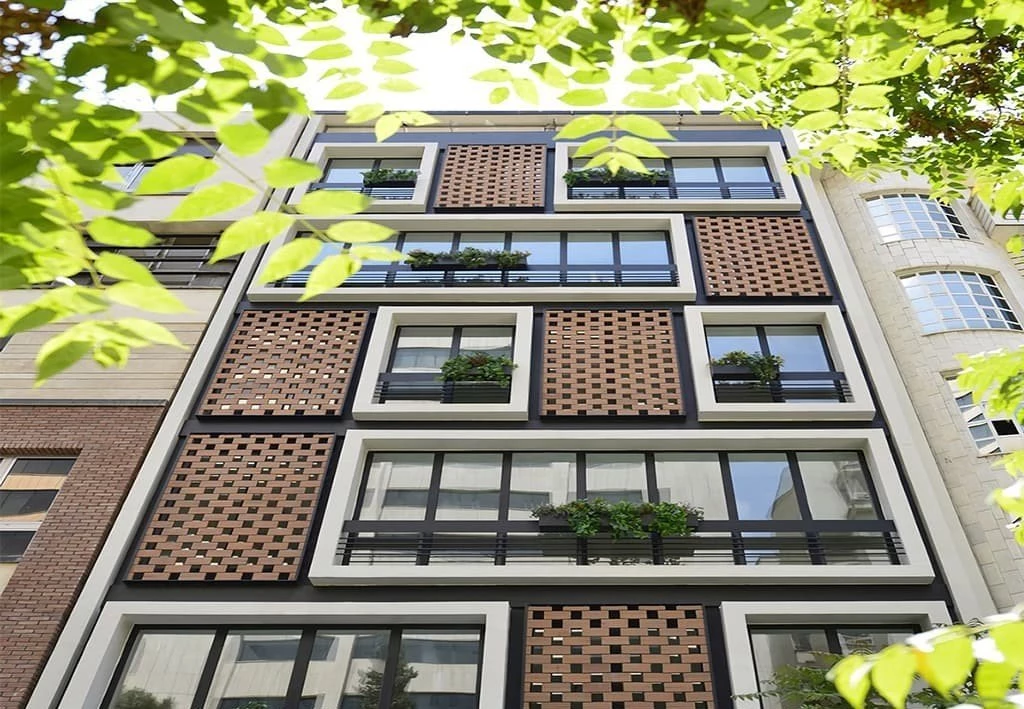
History of brickwork in Iranian architecture
Brickwork has a very rich background in the architectural history of our country. Remains of brick kilns in Silk hills and Shush city show that 4000 years before Christ, brick clays were produced in our country. In fact, the age of Iranian architecture using bricks is not known correctly, but the special and unique position of this type of building material cannot be underestimated .
Building with bricks has a very long history. However, the phenomenon of decorating the facade and using brickwork on the facade of the building shows the taste and art of Iranian architects, which has been done since many years ago. In the past, these architects used bricks to build buildings and in different parts such as covering the roof, floor, walls, etc. As an example of old examples, we can mention the temple of Chaghazanbil in Khuzestan province. This building was left over from the Elamite era and dates back to before Islam .
Many brick buildings are also left from the 2nd to the 13th century AH. The 13th century ends with the Qajar rule, and the brick buildings left from that era are among the great works of Iranian architecture. Among the remaining works from the 2nd to the 13th century, the following can be mentioned :
- Qaboos dome tower in Golestan province
- Jame Mosque of Isfahan
- Maulana Zainuddin Abu Bakr mosque and tomb in Khorasan province
- Maragheh red dome in East Azerbaijan city
- Eight Paradise palace
- Forty Columns
- Aali Qapu Palace
- Qaysarieh Bazaar, Isfahan
- Golestan Palace, Tehran
- Vakil bath in Shiraz
- Vakil mosque
- Kolah Ferangi mansion in Rasht city
The most important brick buildings of the Pahlavi era
Brickwork is one of the most prominent styles of architecture in the world, which also has a rich history in our country. In the contemporary era, new and special forms of brick decorations emerged, examples of which can be seen in buildings left from 70 to 80 years ago. During the Pahlavi era, bricks were used more than other materials, and this shows the competence of Iranian masters and architects, who were able to combine brickwork with other building materials, even cement .
Among the buildings left from that era, we can mention Alborz High School, Firoz Bahram School, Museum of Ancient Iran, Amol Finance Building, Tehran National Library, Tehran City Theater, etc. Buildings left from the first and second Pahlavi periods, such as Tehran City Theater or Tehran Municipality, have beautiful facades with brickwork decorations. In cities like Tehran, the use of brick in the facade of the building is one of the requirements. Decorative brickwork has been used to build the facade of the Tabriz municipality building and many other famous buildings throughout the country .
Brickwork style in the contemporary era
Decorative brickwork is one of the integral parts of contemporary Iranian culture and architecture and has a valuable place in our country. For this reason, these decorations are used in the interior and exterior of many buildings from the past until now. Because Iranian architects are highly creative, they have been able to use other materials in addition to the art of brickwork in the construction of contemporary building facades. They have managed to leave behind very artistic decorations by implementing designs, roles and combining Iranian culture and customs with modern styles. For example, during the first Pahlavi period, Iranian craftsmen created new decorations by adding relief forms and relief patterns to the art of brickwork .
The art of brickwork, especially brick decorations, is seen mostly in the first half of the first Pahlavi period and plays a major role in covering the buildings of that period. Referring to the buildings left from this era, in the city of Tehran and other cities of Iran, we realize that the construction of most of the buildings with bricks and their facades was primarily due to the ease of implementation with bricks; But having special decorations in the buildings left from this era shows that contemporary artists have been able to use different forms of tiles, carved bricks, decorative brickwork, lead bricks, molded brickwork, etc. to create new designs. get help
Gradually, with the passage of this era and the possibility of using newer materials such as cement and stone, the art of brickwork lost its prosperity and the style of Iranian architecture changed. Of course, this decorative art is still used and has its own fans. In general, modern Iranian architecture has regularity and order. For this reason, in the architecture of recent years, the combination of brickwork and stone has been used in building facades .
Today’s combined application of brickwork in the architecture of our country
Today’s combined use of brickwork with stone in the architecture of our country and other building materials has caused a high variety in building facades. Considering that the last historical period of using brickwork in the facade of the building is related to the first Pahlavi period, by looking at the architectures and decorations left from that period, it can be understood that the techniques of the Qajar period were still used; But because the architectural decorations are combined with different materials, they have found a new effect .
Because stone is a good insulator for cold, heat, and sound, and has good resistance to impact, earthquake, freezing, fire, and falling, in environments with suitable weather conditions, it is better to combine brickwork with stone for the facade of the building. is used
Stones are natural building materials that are extracted from mines. Therefore, their importance and position in building construction cannot be ignored. The features and characteristics of natural stones and the possibility of using new technologies to process and use them in construction make them have many fans. For this reason, architects and people who use creative styles for building facades prefer to create a combination between traditional and modern styles and use stone in addition to brickwork .
Today in Iran, there are many companies that are active in the field of producing all kinds of bricks, and because of the high variety of bricks produced in these companies and factories, the use of brickwork for building facades is still the first word. It is true that brickwork is considered a traditional style, but due to its characteristics, it is still used in different regions of the country .
Most of the Iranian architects use it for construction and decoration of the building because of its strength, durability, insulation against cold and heat, diversity in design, size and color, as well as the availability of raw materials for the production of bricks. Also, brick is very compatible with other building materials. So that in the contemporary buildings of Iran, brickwork and all kinds of stones or other construction materials such as plaster or tiles are combined .
In recent years, examples of refractory bricks have been produced that have a very high resistance to heat and humidity. For this reason, it is also possible to use bricks for building facades in humid areas of the country. Because brick making is one of our old traditions and has an Iranian flavor. The bricks that are produced today, special facade bricks, decorative and ornamental bricks have various colors and can be used in all parts of the building .
One of the new samples produced in brick factories are Kazakh bricks, which are inspired by the old mud clays. These bricks, which have various colors of pink, orange, yellow, red, etc., have many fans; Because they have a traditional appearance and are mostly used to make the facade of traditional buildings, restaurants, gardens, villas and places with traditional style .
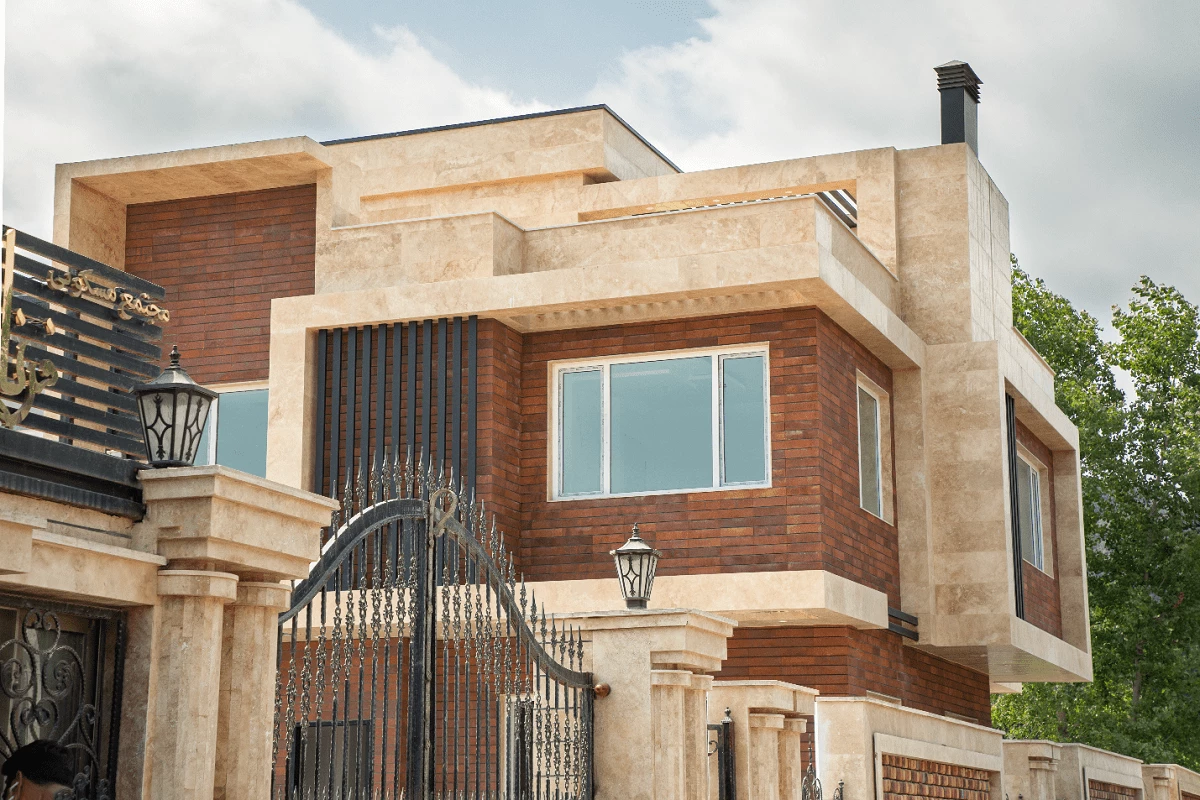
final word
Talking about the history of brickwork in Iran and different styles of Iranian architecture is a topic that can be written a lot. But in this article, we only mentioned the history of brickwork in the contemporary period of Iran and talked a little about its modern integration with other materials in the architecture of our country .
————————————————————————————————————
Brick architecture and brickwork in different periods of Iran
When you touch the brick and see its unique beauty, you will not even think about the ups and downs path this material has traveled from the past to the present to open its place in the heart of Iranian architecture and the people of this country. But you should know that the evolution of brick architecture in Iran is very readable and interesting !
Brickwork and brick architecture in each period of Iran has a special color and flavor and has undergone changes according to different conditions and periods of time. Stay with us until the end of this article to get interesting information about bricks .
Brickwork has been of interest in Iran since the Achaemenid period, it reached its peak during the Seljuk period, and the brick architecture of the Seljuk period remained unique for many years. Over the years, the use of bricks has flourished and declined for various reasons. This downward trend continued until the middle of the Qajar rule, when brickmaking flourished again and continued until the second Pahlavi .
Brick is one of the materials that has always played a prominent role in the formation of Iranian architectural spaces. In general, Iran is one of the countries that has a strong background in using bricks .
The history of brick making in Iran goes back to the time of the pre-Babylonian governments. The ovens found in Susa are proof of this. As mentioned in the article on Chaghazanbil Ziggurat, this masterpiece is the oldest and largest work of pre-Islamic brick architecture in Iran .
In every era, the uses of bricks in our land are very diverse and they are used in different parts of a building such as skeleton, wall and even in decorative applications .
The richness of the art of brick architecture in Iran is so great that Simon Ayvazian, an Iranian architect, photographer and musician, wrote the following about brick and its place in Iranian architecture :
” Brick in Iranian architectural works is not a particle in front of the whole architectural works, but a unit that sits in the heart and soul of architectural works and has a decisive role. A brick in a building is like a note in music or like a word in a poem .
From this word, we can get the concept that just as words are needed to write a poem and notes are needed to make a piece of music, bricks play the same vital role for Iranian architecture .
Before addressing the issue, it is necessary to clearly state the meanings of the terms brick architecture and brickwork, which are very visible in this text. Despite their differences, these two terms are mistakenly used interchangeably in some sources in the same sense .
Brick architecture is a style of architecture in which the main element used is brick, and any kind of space created by bricks is considered as a work of brick architecture. But brickwork refers to the art of arrangement and arrangement of bricks, which is done in order to provide decorative views that fit the overall shape of the building and avoid uniformity, which is done in different artistic ways .
In this article, it is said about brick architecture in the following governments .
- The Seljuks
- Khwarazmshahs
- Patriarchs
- Timurians
- Safavian
- Alive
- Qajar
Brick architecture in the Seljuk era
Seljuk rule is the age of architectural expansion, especially the boom of brick architecture. At this time, the art of brickwork in Iran was so luxurious that it advanced to faraway places, even Africa. During the Seljuk period, brick decorations became popular. For these reasons, this period has been called “the period of development and evolution of the art of brickwork”. In some sources, due to the abundance of brick works in this period, the Seljuk era ” Golden age of brickwork after Islam “ also called
The history of art passed one of its best periods at this time and the first large mosques with a central courtyard, halls and four porches were formed for the first time during this period. This style is actually the basis of religious architecture in Iran and many religious places and even caravanserais and schools were built in this style in later periods .
The following examples can be mentioned among the outstanding works of the Seljuks .
- Ardestan Grand Mosque
- Qazvin Mosque
- Golpayegan Mosque
- Tomb of Sultan Sanjar
- Red Dome in Maragheh
- Mehmandoost Tower in Damghan
- Toghrel tower in Ray city
The combination of brick with other materials was done for the first time during this time, and as mentioned earlier, the Seljuk era is the time of the perfection of the art of brickwork, to the extent that no more magnificent works similar to the Seljuk works can be found in any period after that. An interesting point about the architecture of this time is that the peak of Seljuk brick architecture coincided with the decline of this government .
Brick architecture and brickwork during the time of the Khwarezmshahs
There is no Jamghi information about the architecture of this period due to the Mongol attack and few architectural works have been left. But according to these rare and precious examples, we can see that the architecture of this period was very similar to the Seljuk style of architecture. It is because of the similarities that some of the buildings of this time are attributed to the Seljuk government. Of course, this is also the case with many works of the Khwarazmshah period. In general, from the point of view of other arts, this era is considered the same as the Seljuk period .
Malek Zozan Mosque, Foroud Mosque and Gonabad Jame Mosque are among the most prominent buildings of the Khwarazmshah period in Khorasan. There are many brick decorations in these mosques. The geometric patterns of mold bricks, so called ” Embossed pottery “ They said that it can be seen in abundance in the buildings of this era .
Brickwork during Ilkhanid period
Despite the extensive destruction they caused, the Ilkhanians supported the artists and invited many of them to Iran, which they considered their homeland. It can be said that no new architectural style was created in the brick architecture of the Ilkhanid era and it was a follower of the Seljuk architecture .
But the thing that was very important in this era and made significant progress was the method and techniques of brickwork. The combination of brick with tile and brick with embossed and embossing motifs is one of the characteristics of Ilkhanian architecture. In general, during this period, brickwork gave way to plaster decorations .
At this time, there was a vast evolution in the techniques of brick arch coverings. An example that can be mentioned in this context is Soltanieh Dome in Zanjan .
The architecture of the Soltanieh Dome was so influential that the architecture of many churches in Europe, especially the Santa Maria Church in Florence, was inspired by it .
At this time, the emergence of a type of small Mehri bricks led to the emergence of unique brick decorations. Examples of them are Varamin Grand Mosque, Janban Minar and Isfahan Grand Mosque .
Brick architecture during the Timurid period
The brickworks of the Timurid era laid the groundwork for significant improvements in brick architecture in later periods. During the Timurid period, bricks were placed under the tile layer. At this time, tiles were used for decorative purposes and the construction of brick coverings for domes evolved .
Shamse Posh and Turkin show the evolution of these types of arches well. Among the prominent architects of this time, we can mention the master Ghiyathuddin Shirazi, and among the works of this era are Akhangan Tower or Akhanjan, Ghiyathiyeh School, Qain Mosque and Sangan Gonbad Mosque .
Brickwork during the Safavid era
During this period, tiling was more important and the importance of brick and attention to it decreased day by day. This factor caused brick not to be considered as it should be during the Qajar era. Despite this little attention to bricks, lasting effects of Safavid brickworks have been left. Vank Church in Isfahan and Bahram Palace Caravanserai in Semnan are successful examples of Safavid brick architecture .
The types of brick dovecote towers and brick grid facades and other things are also from the art of brickwork of that time. During the Safavid era, the construction of bridges also prospered, and many bridges named after Iran, such as the 30-year-old bridge, are a reminder of that time. During this period, the construction of brick reservoirs was also very important .
Iranian brick architecture during Afshariya and Zandiye period
During the Afshariya period, due to military conflicts and conflicts of this kind, the art of architecture did not progress much, and as a result, brickwork also received little attention. But after that, during the Zandiye period, brick architecture was again noticed and unique buildings such as Vakil Bazaar, Vakil Mosque, Pars Museum in Shiraz and Karim Khan Zand Citadel were left behind .
Brick architecture in the Qajar period
During the Qajar era, urban planning took on a new color and flavor, but tradition still prevailed in it. More precisely, it can be said that during this period, the principles of old architecture continued in the same form, but its details were changed and improved. In general, Qajar architecture received influences from Western architecture due to Iran’s good relations with Europe. For this reason, some have considered this period as a period of decline and some have considered it as a period of growth and prosperity and have divided it into three general periods .
In this era, in addition to the exterior of the houses, bricks were also used in the inner courtyard. During the Qajar era, Dezful was one of the cities that achieved great success in the field of brick making. In general, brickwork on the top of residential buildings in the historical context of cities is also a relic of the brick architecture of the Qajar period. Masoudiya mansion is a famous example of architecture in this era .
At this time, the art of ax work flourished and the taste of bricklayers in the emergence of brick decorations was very high. The roofs of the bazaars were also built with brick arches during the Qajar period. An example of these markets is Arak market .
final word
In this article, an attempt was made to discuss brick architecture and brickwork in different periods of Iran and its evolution in the following governments .
- The Seljuks
- Khwarazmshahs
- Patriarchs
- Timurians
- Safavian
- Alive
- Qajar
Now, by touching a brick, we know what is its interesting story and what has brought the brick for our use to this day. To learn more about the history of brick and the art of brick architecture, visit our other articles on the subject. What information do you have about the evolution of using bricks in Iran? Share your opinion about this with us .
Related and suggested content :
Minimal home decoration, make your home simple but beautiful !
Scandinavian style; Simple and stylish style for your home
Shabi stylish decoration; A feminine effect in home decoration !
Duplex building plan [Duplex house plan]

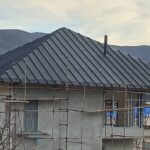
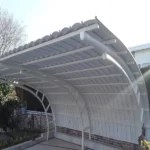
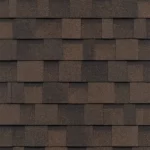
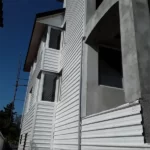
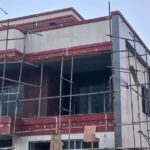
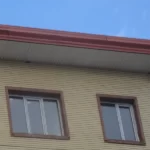


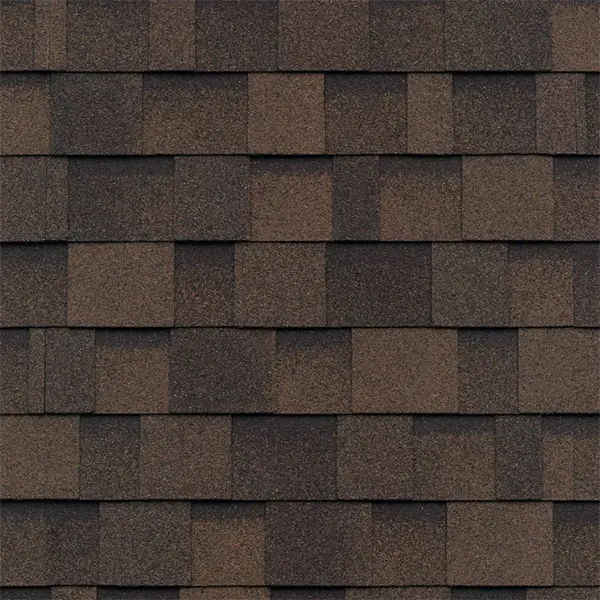



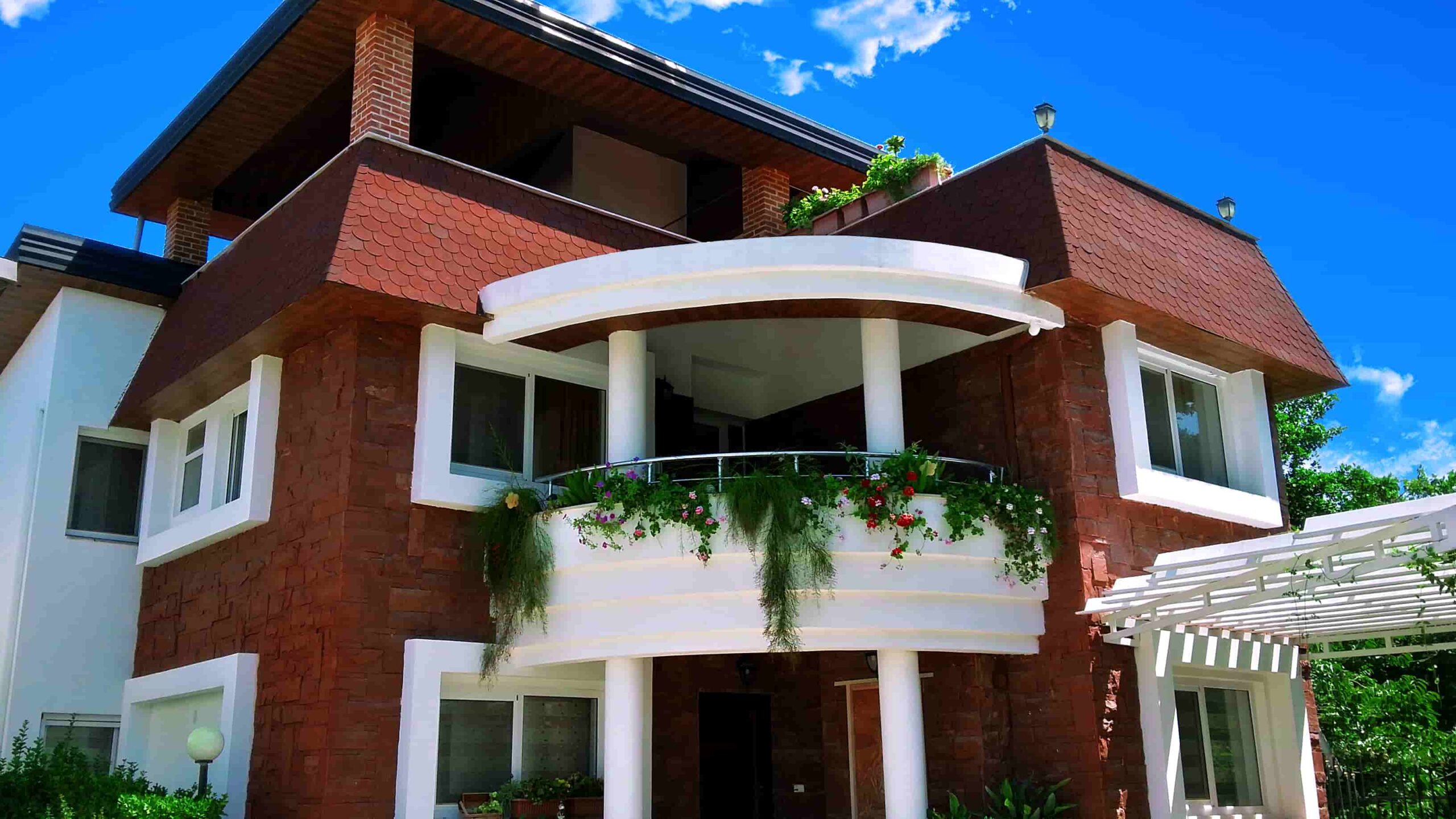
No comment